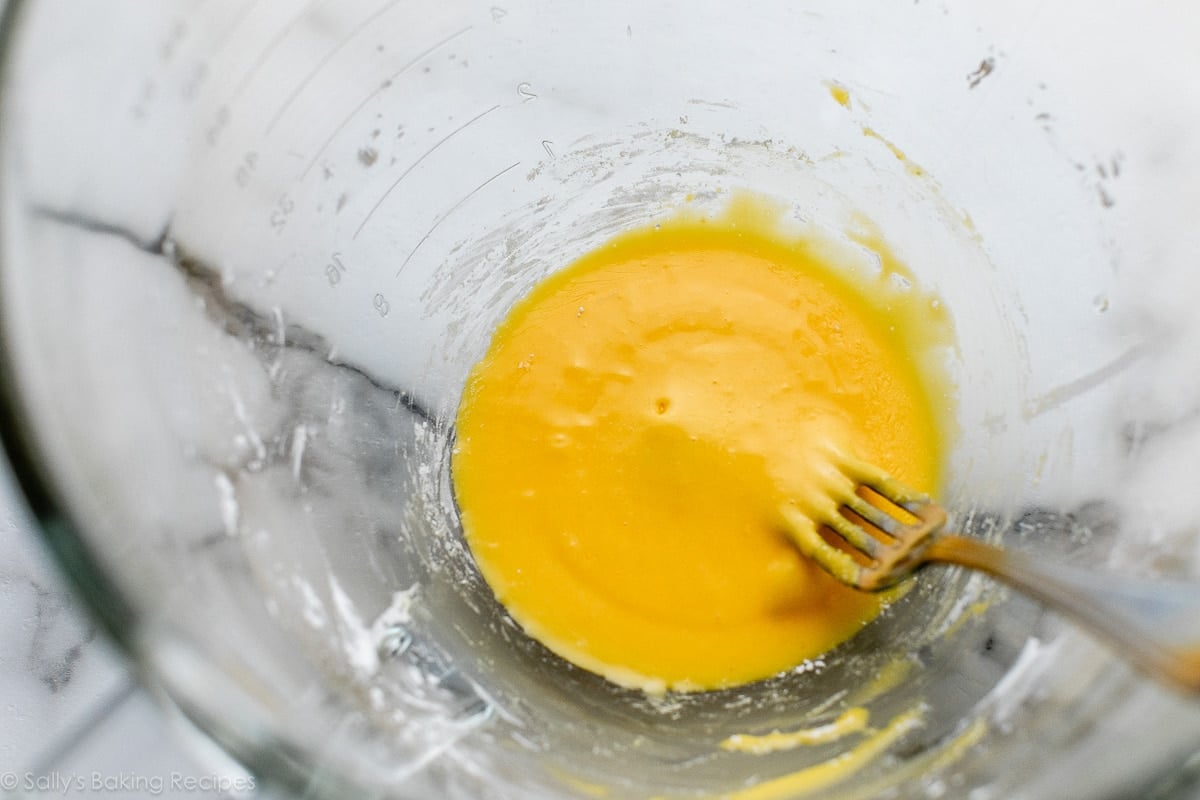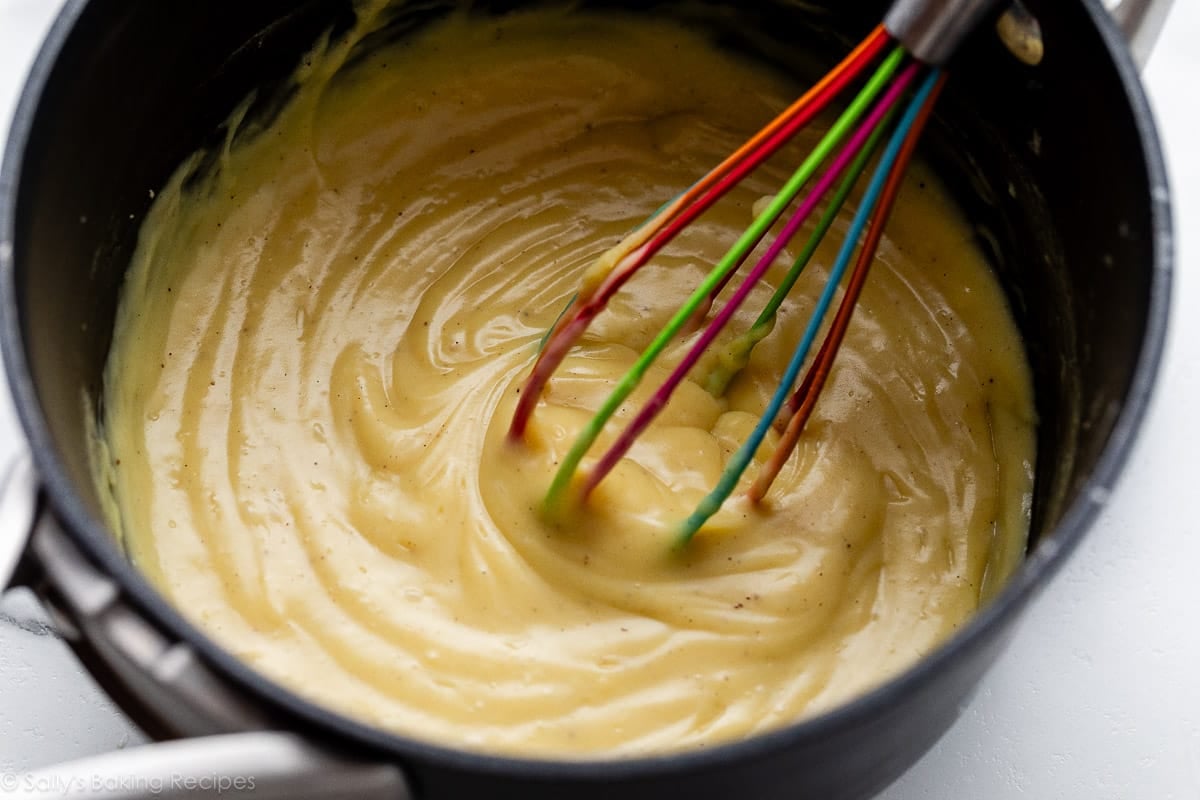Description
Homemade pastry cream (crème pâtissière) is a versatile custard filling you can use in so many baked goods, such as pies, eclairs, cream puffs, mille-feuille, and more. Follow my step-by-step instructions and success tips to get started, and then let your imagination run wild with all the ways to use it!
Ingredients
- 4 large egg yolks, cold or room temperature
- 3 Tablespoons (23g) cornstarch
- 2 cups (480ml) whole milk (do not use low-fat or nondairy)
- 1/2 cup (100g) granulated sugar
- 1 Tablespoon (14g) unsalted butter, softened to room temperature
- 1 teaspoon pure vanilla extract
- seeds scraped from 1/2 vanilla bean (or extra 1/2 teaspoon vanilla extract)
- small pinch salt
Instructions
- In a large heatproof bowl (preferably with a pour spout), whisk the egg yolks and cornstarch together with a fork. It may not look like it will all come together (it will be dry at first), but keep mixing until the mixture is thick and combined. If it’s not coming together at all, add a few drops of the milk you need in step 3 to bring it together. Set aside at room temperature.

- Combine the milk and sugar in a medium saucepan over medium heat. Whisk until the sugar has dissolved, then bring to a gentle simmer. Remove from heat. Pour the warm milk and sugar mixture in a slow and steady stream into the egg yolk and cornstarch mixture, whisking the entire time. Keep those egg yolks moving so they don’t scramble. Pour the mixture back into the saucepan through a sieve, to strain out any egg yolk solids that may have formed during tempering.


- Return the saucepan to medium heat, and whisk constantly. The mixture will be frothy on the surface at first, and then it will begin to thicken quickly and large bubbles will begin to burst on the surface. This usually takes about 1–2 minutes. Stand back and use caution. Let the bubbles burst for about 20 seconds, or until the mixture has thickened into a custard- or pudding-like consistency. (For a more accurate test, the custard is done when the temperature reaches 185–190°F (85–88°C).) Remove from heat. Whisk in butter, vanilla extract, vanilla bean seeds, and a pinch of salt. Cool for 10 minutes.


- Transfer the pastry cream from the saucepan to a heatproof bowl and place a piece of plastic wrap or parchment directly on the surface of the custard, to prevent a skin from forming. Refrigerate for at least 3 hours, and up to 24 hours. Makes 2–2.5 cups, or about 580–610g.
Notes
- Make Ahead Instructions: You can make this pastry cream up to 24 hours in advance. See step 4.
- Special Tools (affiliate links): Egg Separator | Heatproof Bowl With a Pour Spout | Wire Whisk or Silicone Whisk | Medium Saucepan | Sieve | Heatproof Bowl
- Can I Use Vanilla Bean Paste Instead of Vanilla + Vanilla Bean? Yes, you can use vanilla bean paste because it combines both extract AND vanilla bean seeds. Omit the vanilla extract and vanilla bean seeds and use 2 teaspoons vanilla bean paste instead.
- Other Flavor Ideas: See list above the recipe, including lemon, cinnamon, espresso, coconut, etc.
- How to Make Diplomat/Lightened Cream: Using a handheld or stand mixer fitted with a whisk attachment, whip 1/2 cup (120ml) cold heavy cream on medium-high speed until medium peaks form, about 3 minutes. Add the chilled pastry cream to the bowl with the whipped cream. Beat on low speed until just combined and smooth. Do not over-mix. Cover and refrigerate for at least 1 hour and up to 4 hours.
- Leftover egg whites? I have some recipe ideas for you!
- Can I Use This as a Filling for Layer Cakes? Yes. See this Boston cream pie recipe. Note the pastry cream recipe differences, though. That recipe is from America’s Test Kitchen cookbook, and it uses half-and-half, flour, and more egg yolks. In my own testing, the recipe here produces pretty much the same results in terms of thickness and stability, so it’s great to use in layer cakes! Either works wonderfully for your cakes.

